North America Irrigation Valves Market Size
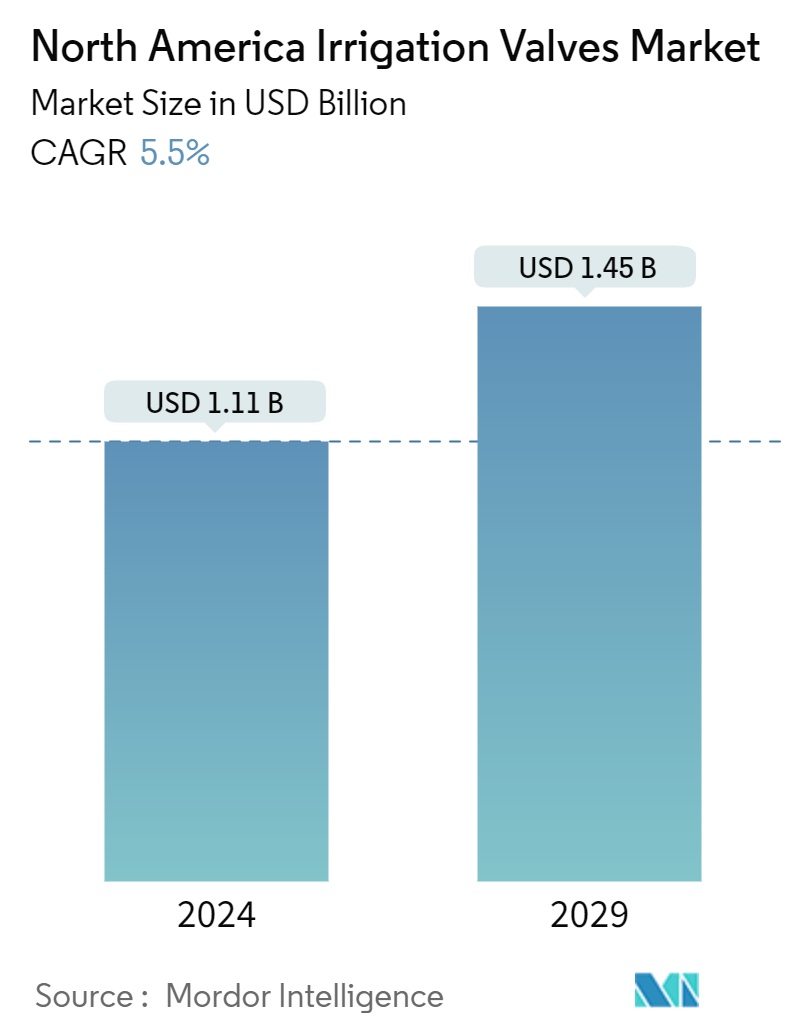
| Study Period | 2019 - 2029 |
| Base Year For Estimation | 2023 |
| Market Size (2024) | USD 1.11 Billion |
| Market Size (2029) | USD 1.45 Billion |
| CAGR (2024 - 2029) | 5.50 % |
| Market Concentration | Medium |
Major Players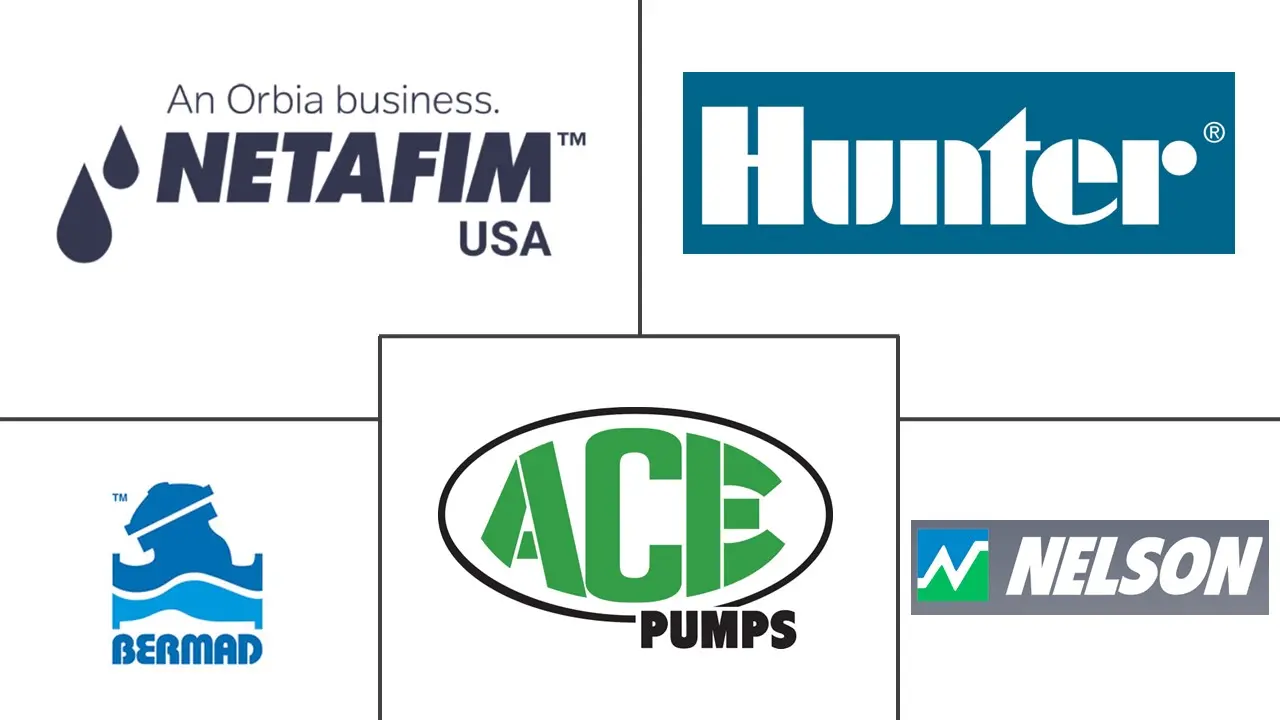
*Disclaimer: Major Players sorted in no particular order |
North America Irrigation Valves Market Analysis
The North America Irrigation Valves Market size is estimated at USD 1.11 billion in 2024, and is expected to reach USD 1.45 billion by 2029, growing at a CAGR of 5.5% during the forecast period (2024-2029).
Several factors, like increasing population, growing adoption of advanced technologies, increasing initiatives for water conservation, raising awareness of automated irrigation, etc., are playing an essential role in the growth of the studied market.
- Smart irrigation systems are becoming rapidly popular among farmers and homeowners due to their numerous benefits. A smart irrigation system is programmed remotely to turn off or on the water flow when it detects a problem. This aids in preventing water waste, reduces water bills, and simultaneously saves the environment.
- The traditional irrigation systems have led to enormous amounts of fresh water getting wasted in the seas. Smart irrigation systems have become the answer to wastefulness and inefficient crop watering problems. An IoT-based smart irrigation technology waters plants when it is truly needed, as these smart sprinkler systems are fully automated and controlled by sophisticated sensor technology. Additionally, new advancements like low-flow rate emitters, micro-sprinklers plus variable rate irrigation, and moisture sensors enable farmers to precisely manage how much and how often they run their automatic sprinkler systems to meet their crop needs.
- Risers, timers, and valves are the parts that are commonly utilized in most irrigation systems. Valves allow a farmer to adjust the application rate between different system sections. Hence, the increasing adoption of sophisticated irrigation technology is anticipated to offer lucrative opportunities for the growth of the studied market.
- To cater to the increasing demand for irrigation valves, several market players are launching advanced products by way of extensive investments in R&D and collaborations. For instance, in June 2021, PRIER launched a new P-6IV irrigation valve, which comes with a built-in elbow that swivels to facilitate easy installation and reduced cost for extra parts. It allows servicing from the structure's exterior rather than entering the residence. The P-6IV is available in 12 lengths to suit a broad range of installation needs across the United States and Canada.
- On the flip side, raw materials account for more than half of the overall cost of the product. The quantity of R&D required to meet the advances in the valves market is significant. Such challenges limit the ability of irrigation valve manufacturers and suppliers to meet market demand. Furthermore, raw materials such as stainless steel, ductile iron, and carbon steel in the form of the forge are critical in the manufacture of valves. Prices for these products have been rising and fluctuating for a variety of reasons, including increased transportation costs. As a result, these factors are projected to impede market growth over the forecast period.
North America Irrigation Valves Market Trends
Growing Population and the Need for Water Conservation is Expected to Drive the Market's Growth
- According to IMF, the total population in the United States was at 334.91million people in 2023, an increase from the 2019 population, which accounted for 328.55 million. Such a significant population increase would increase the demand for agricultural products, creating an opportunity for the studied market to grow.
- Agriculture intensification and expansion to feed a growing population is a crucial source of concern for food security and biodiversity in the region. The Sustainable Development Goals (SDGs) were established to resolve the trade-off between food security and environmental damage. Indeed, the global food production system and the preservation of biodiversity within and surrounding agricultural land have an impact on SDGs such as zero hunger, clean water, life on land and in water, and climate action.
- All agricultural operations, regardless of kind, should design and implement a conservation strategy based on Natural Resources Conservation Service recommendations (NRCS). An Irrigation Water Management Strategy can be prepared as part of this plan to address site-specific water usage needs, such as the amount of water necessary for each irrigation cycle (including leaching requirements), To recognize and control irrigation erosion, determine application uniformity, undertake system maintenance to ensure smooth operation. The drive for sustainability is anticipated to offer lucrative opportunities for the growth of the studied market.
- Resultantly, in October 2022, it was announced that farmers were being paid to limit their water use and conserve wildlife and water quality in the Delta as part of the State of California's Delta Drought Response Pilot Program. The Sacramento-San Joaquin Delta Conservancy leads the program in collaboration with the Department of Water Resources (DWR), the Office of the Delta Watermaster, and the Nature Conservancy. The initiative works with farmers to develop water-saving techniques, safeguard Delta water quality, enhance soil health, and alleviate the effects of drought on fish and migrating birds. The show debuted in January 2022. The program's first phase, which offered USD 8 million in funding, was a success, with over 8,700 acres participating.
- Moreover, in October 2022, The United States Agency for International Development (USAID) and the Department of State launched the United States Global Water Strategy 2022-2027. The Strategy will assist lead the United States government's activities over the next five years to advance health, prosperity, stability, and resilience by improving water resource management and increasing access to safe drinking water, sanitation, and hygiene.
- The Strategy is the primary vehicle for implementing the White House Action Plan on Global Water Security, and it is based on Senator Paul Simon's Water for the World Act of 2014. Fourteen Agency-specific plans from throughout the Federal government supplement the Strategy by bringing together the full weight of the United States government's skills, experience, and resources to solve the issue. Such initiatives are likely to increase the adoption of advanced irrigation valves in the region.
- Further, in December 2022, the federal government of Canada set an aim of protecting 30% of Canada's land and water by 2030, citing scientific evidence that nature requires assistance to reverse biodiversity declines, combat climate change, and maintain a robust, sustainable economy. The federal government owns most land in Canada. It owns or leases about 25 000 properties across Canada, totaling over 30 million hectares. National parks, experimental farms, and wildlife zones are examples of these lands. In addition, Nunavut and the Northwest Territories have over 240 million hectares of federal royal territory.
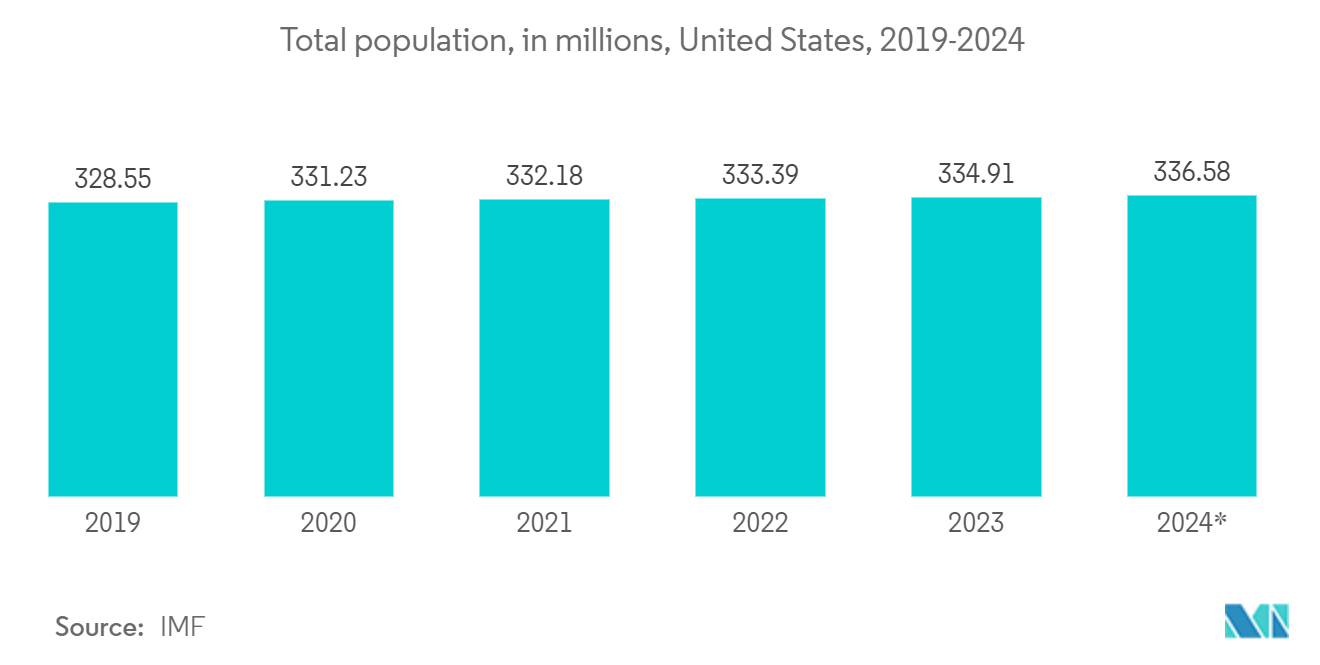
The United States is Expected to Witness a High Market Growth
- The United States holds the highest market share in North America Irrigation Valves Market by Region due to increased awareness about irrigation valves, advanced technologies, and research & development activities. The prominent use of irrigation valves in this region can be ascribed to the great supply of fresh water and ideal climatic circumstances, such as adequate rainfall throughout the year, which aids in improved farm produce, hence pushing their demand.
- Growing emphasis on the agriculture sector, as well as an increased understanding about the efficient use of farm resources such as water for sustainable crop production, will contribute to regional revenue creation during the projection period.
- The rise in the production of agricultural products in the region is expected to drive the studied market. For instance, the US Department of Agriculture reported that, as of 2023, Texas witnessed the highest number of farms in the nation, totaling around 231,000. Following closely, Missouri secured the second spot among the top ten states, with a count of 87.6 thousand farms.
- Additionally, the government policies towards the development of agriculture in the region would create several opportunities for the local and international players to develop products to carter wide range of needs of customer. For instance, the Agriculture Improvement Act of 2018 (2018 Farm Act) consists of 12 titles that cover a wide range of food and agriculture policy topics. The Congressional Budget Office (CBO) estimated that the 2018 Farm Act would cost USD 428 billion over five years, from 2019 to 2023. Nutrition programs account for almost three-fourths of this amount, with crop insurance, conservation, and commodities accounting for nearly all of the remainder.
- Moreover, the firms in the region are providing new products to capture a wide range of market needs. For instance, in December 2023, Tempo Communications, a manufacturer of tools and test equipment for the telecommunications and landscape irrigation industries, announced the release of the 521E Wire and Valve Locator. The 521E is engineered to quickly and easily pinpoint buried wires, irrigation valves, and faults.
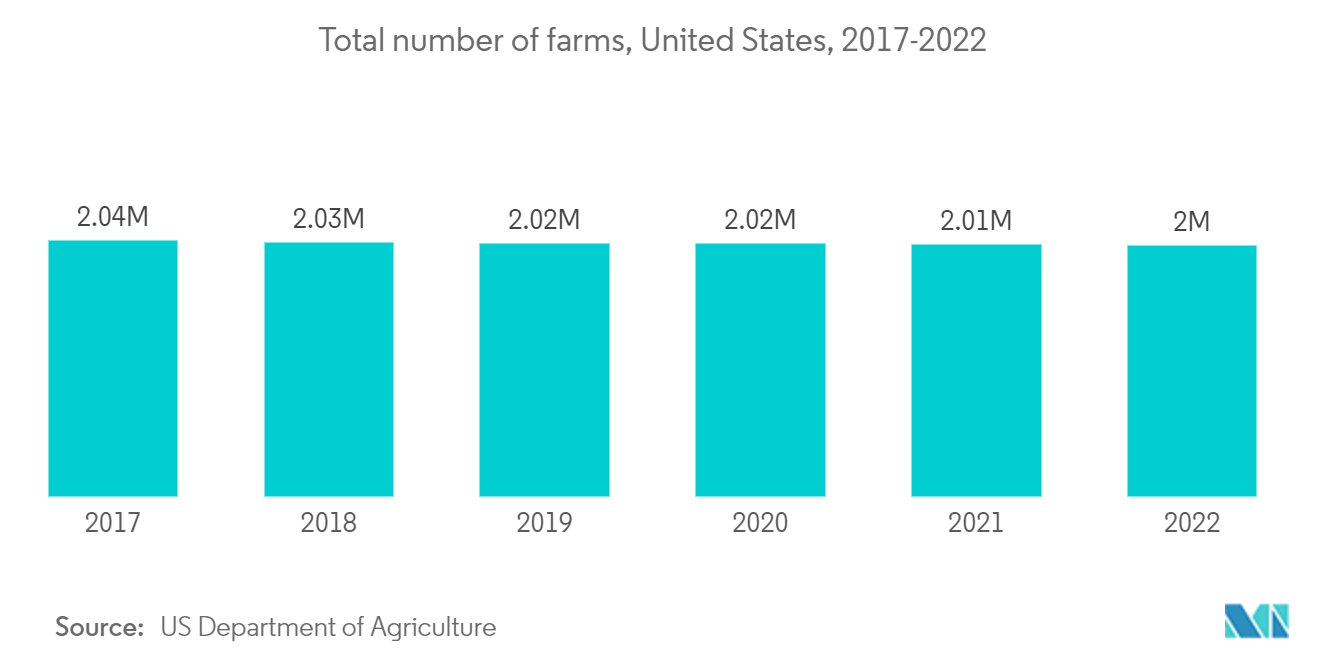
North America Irrigation Valves Industry Overview
The North America Irrigation Valves Market is a moderately competitive market with the presence of several significant players like Ace Pump Corporation, Bermad CS Ltd, Netafim USA, Nelson Irrigation, etc. The market players are striving to cater to consumers' complex and evolving needs through innovation, R&D, collaborations, and mergers.
In March 2024, Belimo expanded its range of control butterfly valves, introducing sizes from DN 100 to DN 150 (4 to 6 inches). These valves, known for their reliability and innovation, optimize heating and cooling water circuits and ensure the smooth operation of HVAC systems. With their linear characteristic curve, these valves can also function as 3-way control valves in mixing and distribution applications.
In November 2023, Flowserve Corporation introduced the Worcester Cryogenic series. This series features quarter-turn floating ball valves, recognized for their reliability in LNG, hydrogen, and various industrial gas applications. The valves are available in two configurations: a three-piece design (CF44 series) and a flanged option (CF51/CF52 series). Key features include a high-strength stem and an enhanced live-loaded stem seal, providing superior control over fugitive emissions.
North America Irrigation Valves Market Leaders
-
Ace Pump Corporation
-
Nelson Irrigation
-
Netafim USA
-
Fluidra S.A (Capex)
-
Rivulis Irrigation
*Disclaimer: Major Players sorted in no particular order
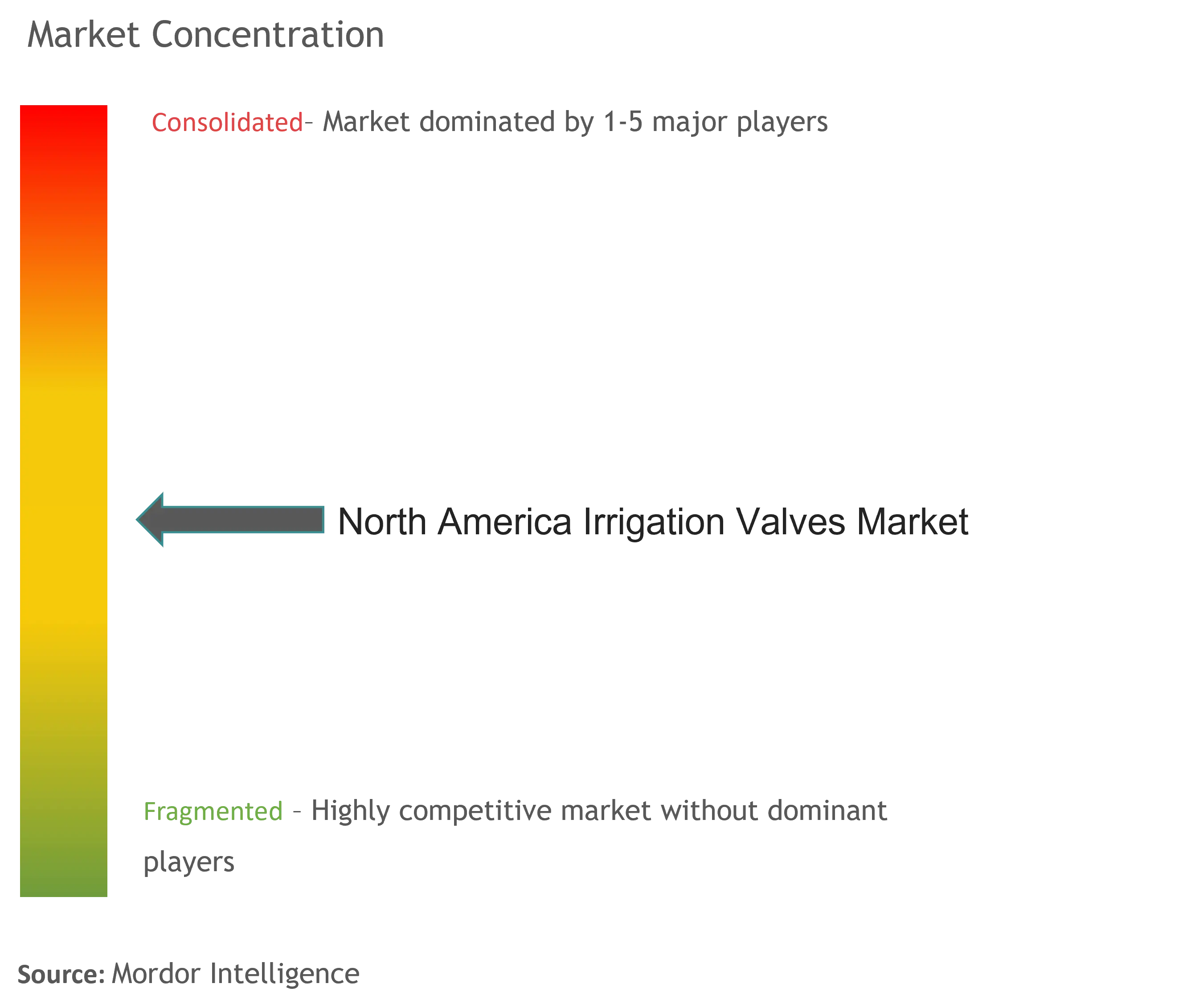
North America Irrigation Valves Market News
- In March 2024, Valworx unveiled its latest offering: a series of V-port stainless steel ball valves. These specialized valves cater to applications demanding exacting flow control. The unique "V" shape of the valve ball ensures a linear flow, simplifying adjustments across the valve's range. Valworx's V-port valves come in sizes ranging from ½ to 3 inches, offering "V" vertex angles of 30°, 60°, and 90°.
- In August 2023, Resideo expanded its HVAC valve offerings with the launch of the Kombi V5007 Pressure Independent Control Valve (PICV). This new valve, designed for dynamic balancing and flow control, offers the benefits of both an automatic pressure-independent flow controller and a constant valve. It's a versatile product, catering to flow requirements across applications ranging from DN15 to DN50.
North America Irrigation Valves Market Market Report - Table of Contents
1. INTRODUCTION
1.1 Study Assumptions and Market Definition
1.2 Scope of the Study
2. RESEARCH METHODOLOGY
3. EXECUTIVE SUMMARY
4. MARKET INSIGHTS
4.1 Market Overview
4.2 Impact of COVID-19 on the Market
4.3 Industry Value Chain Analysis
4.4 Industry Attractiveness - Porter's Five Forces Analysis
4.4.1 Threat of New Entrants
4.4.2 Bargaining Power of Buyers
4.4.3 Bargaining Power of Suppliers
4.4.4 Threat of Substitute Products
4.4.5 Intensity of Competitive Rivalry
5. MARKET DYNAMICS
5.1 Market Drivers
5.1.1 Growing population
5.1.2 Growing need for water conservation (Increasing preference for eco-friendly and sustainable practices in agriculture)
5.1.3 Advancements in Technology and R&D
5.2 Market Restraints
5.2.1 Lack of data management and aggregation
5.3 Market Opportunities
5.3.1 Increase in demand for automation
6. MARKET SEGMENTATION
6.1 By Material Type
6.1.1 Metal Valves
6.1.2 Plastic Valves
6.2 By Valve Type
6.2.1 Ball Valve
6.2.2 Butterfly Valve
6.2.3 Globe Valve
6.2.4 Automatic Valves
6.2.5 Others
6.3 By Application
6.3.1 Agricultural Applications
6.3.2 Non-Agricultural Applications
6.4 By Country
6.4.1 United States
6.4.2 Canada
7. COMPETITIVE LANDSCAPE
7.1 Company Profiles*
7.1.1 Ace Pump Corporation
7.1.2 Bermad CS Ltd
7.1.3 Netafim USA
7.1.4 Hunter Industries
7.1.5 Nelson Irrigation
7.1.6 Raven Industries
7.1.7 IPEX Inc.
7.1.8 Tecnidro Srl
7.1.9 Fluidra S.A (Capex)
7.1.10 Rivulis Irrigation
7.1.11 Dickey-John
7.1.12 TeeJet Technologies
7.1.13 Toro Company
8. INVESTMENT ANALYSIS
9. FUTURE OUTLOOK
North America Irrigation Valves Industry Segmentation
An irrigation valve aids in regulating the one-directional flow of water in an irrigation system. These valves are often found in sprinkler systems. They help control water flow in above-ground systems as well as in-ground systems that have been buried well beneath the surface to present a less cluttered, more attractive landscape.
The North America irrigation valves market is segmented by material type (metal valves, plastic valves), by valve type (ball valve, butterfly valve, globe valve, automatic valves), by application (agricultural applications, non-agricultural applications), and by country (United States and Canada). The report offers market forecasts and size in value (USD) for all the above segments.
| By Material Type | |
| Metal Valves | |
| Plastic Valves |
| By Valve Type | |
| Ball Valve | |
| Butterfly Valve | |
| Globe Valve | |
| Automatic Valves | |
| Others |
| By Application | |
| Agricultural Applications | |
| Non-Agricultural Applications |
| By Country | |
| United States | |
| Canada |
North America Irrigation Valves Market Market Research Faqs
How big is the North America Irrigation Valves Market?
The North America Irrigation Valves Market size is expected to reach USD 1.11 billion in 2024 and grow at a CAGR of 5.5% to reach USD 1.45 billion by 2029.
What is the current North America Irrigation Valves Market size?
In 2024, the North America Irrigation Valves Market size is expected to reach USD 1.11 billion.
Who are the key players in North America Irrigation Valves Market?
Ace Pump Corporation, Nelson Irrigation, Netafim USA, Fluidra S.A (Capex) and Rivulis Irrigation are the major companies operating in the North America Irrigation Valves Market.
What years does this North America Irrigation Valves Market cover, and what was the market size in 2023?
In 2023, the North America Irrigation Valves Market size was estimated at USD 1.05 billion. The report covers the North America Irrigation Valves Market historical market size for years: 2019, 2020, 2021, 2022 and 2023. The report also forecasts the North America Irrigation Valves Market size for years: 2024, 2025, 2026, 2027, 2028 and 2029.
North America Irrigation Valves Industry Report
Statistics for the 2024 North America Irrigation Valves market share, size and revenue growth rate, created by Mordor Intelligence™ Industry Reports. North America Irrigation Valves analysis includes a market forecast outlook to for 2024 to 2029 and historical overview. Get a sample of this industry analysis as a free report PDF download.



